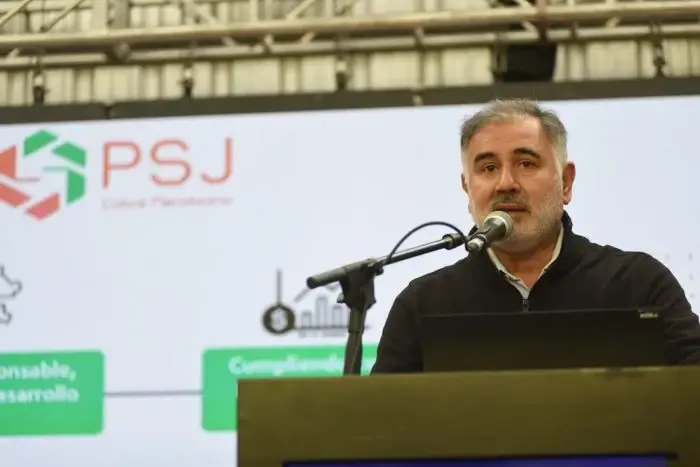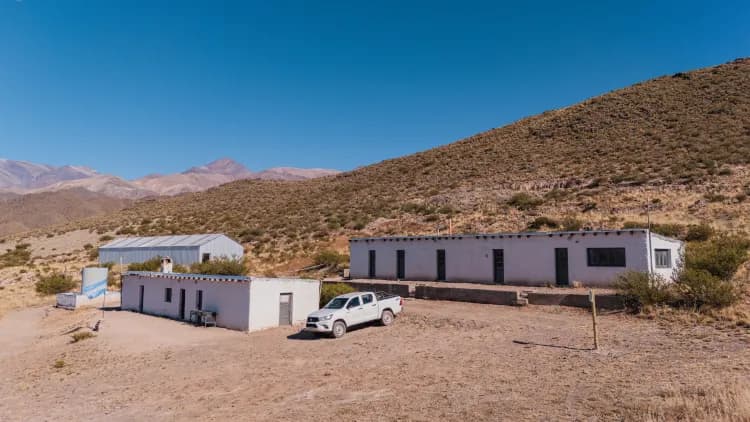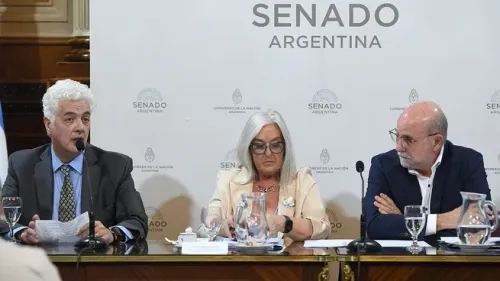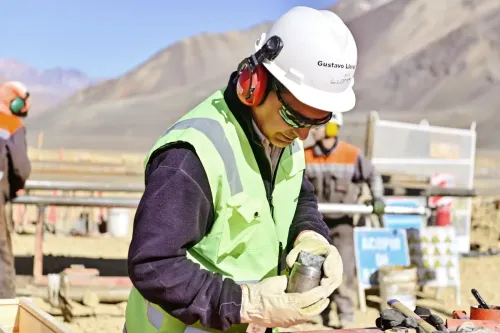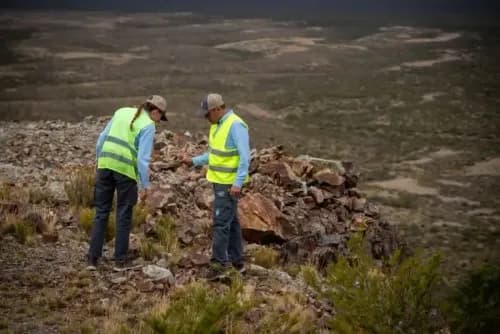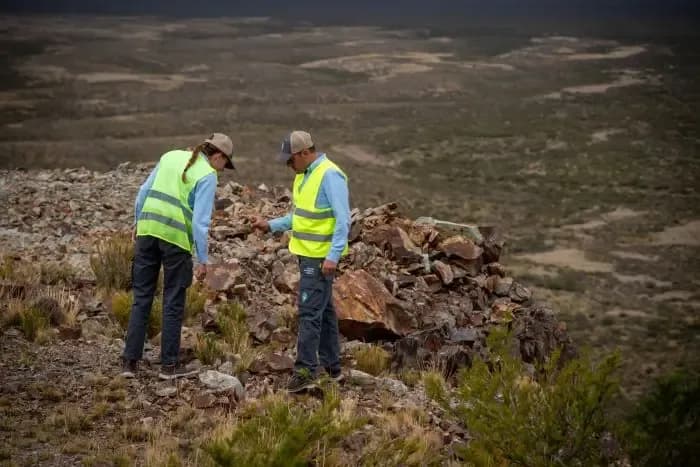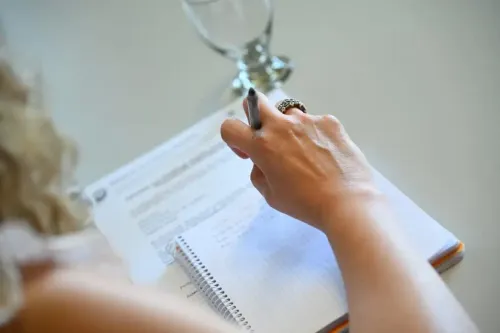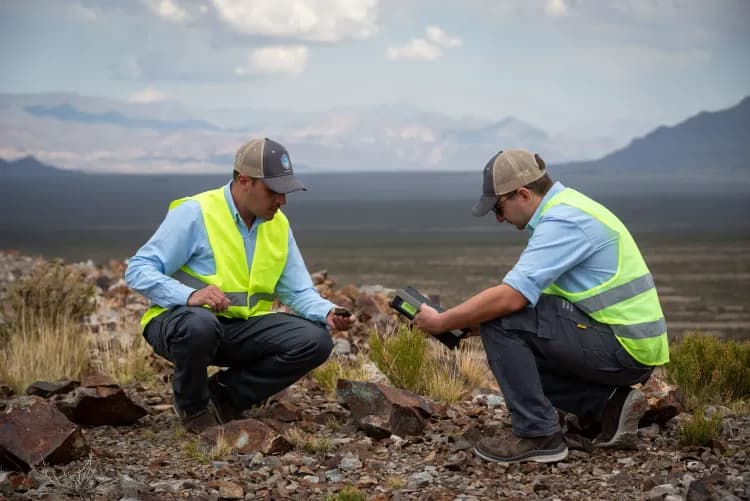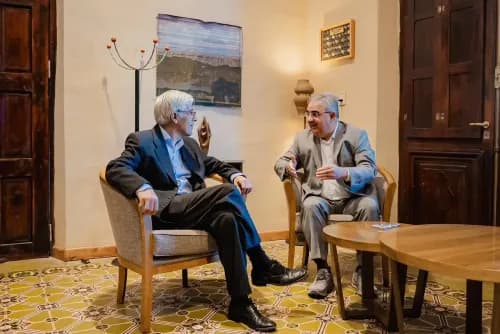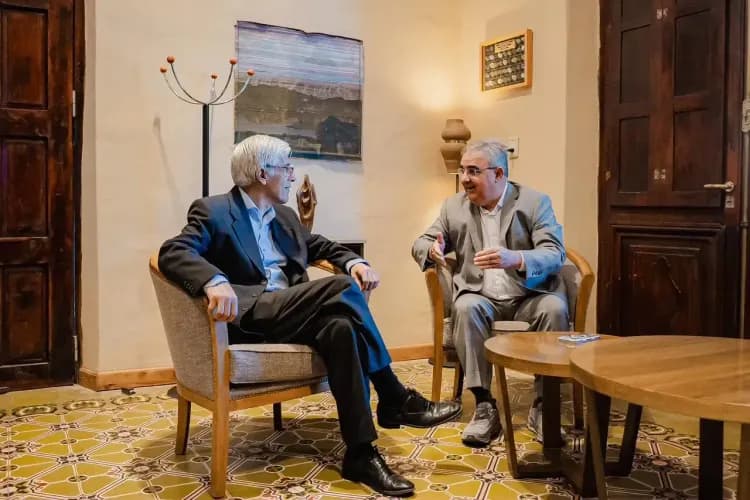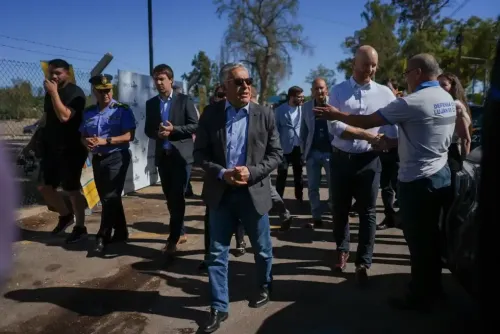The initial sessions of the public hearing for the PSJ Cobre Mendocino project mark the beginning of a lengthy discussion involving more than 3,000 speakers, both in-person and virtual participants.
By Panorama Minero
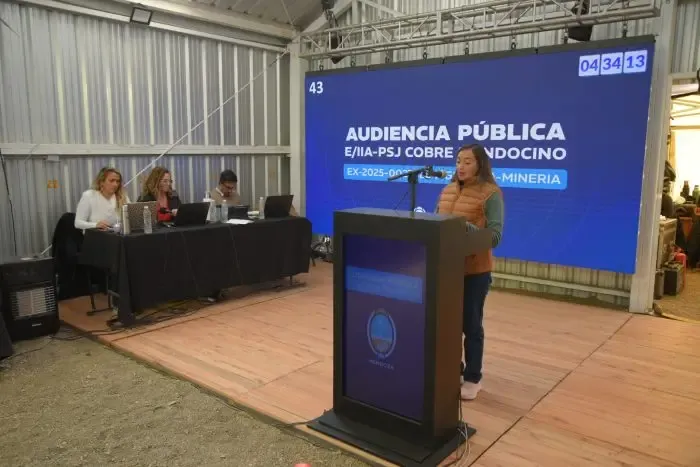
This weekend marked the first sessions of the public hearing for PSJ Cobre Mendocino, a project aiming to produce copper concentrate in the town of Uspallata, Mendoza. Currently undergoing environmental evaluation, the project is being promoted by Zonda Metals and the Alberdi Group and could become the first initiative to put Argentina back on the global copper map.
The process is expected to be a marathon: the in-person segment of the hearing will run through Thursday, with over 1,000 speakers scheduled to participate. However, this won’t mark the end of the public participation phase. It will continue for another week with more than 1,600 people registered to take part virtually. In total, over 3,000 participants will contribute to this stage, which is recorded in the official proceedings but is non-binding.
The hearing is being held at the project site, located on the Yalguaraz Ranch in the Uspallata district, within the Las Heras department.
From the outset, the sessions have proceeded in an orderly and smooth manner, shaping a process in which numerous voices have been heard. Like the first, the second session stood out due to a significant majority—around 90%—of speakers expressing support for the project. Many Uspallata residents voiced strong backing for mining activity, viewing it as a path to job creation and a promising future for younger generations. Parents repeatedly expressed a shared hope: “We don’t want our children to leave, and this is a huge opportunity.” Young people also called for the sustainable development of the PSJ project.
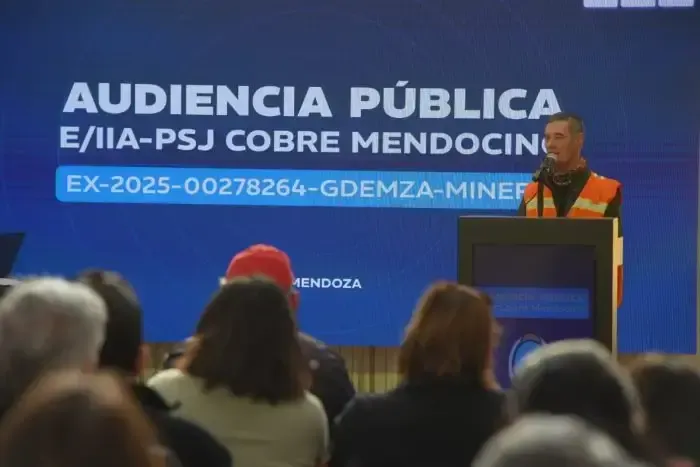
Official Voices and Commitment to Transparency
The Minister of Energy and Environment, Jimena Latorre, closely followed the sessions and confirmed that the proceedings were carried out “with complete normality” and saw a massive turnout of participants. Latorre addressed external criticisms of the institutional framework, calling them “fruitless debates,” and emphasized the importance of the hearing as the “right place” to submit proposals and take part in a “legally valid” process.
The minister explained that the environmental evaluation process began eight months ago, resulting in a file exceeding six thousand pages, thoroughly reviewed by multiple technical agencies. Latorre described the event as historic, declaring: “We are writing a new chapter for Mendoza: responsible, sustainable mining that respects the Constitution.” She stressed that this legal industry operates within the rule of law, ensuring both the right to work and the right to a healthy and balanced environment.
PSJ: Historic Investment and Local Commitment
Fabián Gregorio, CEO of PSJ, reflected on the support expressed during the hearing: “We’re not surprised by it—we’re grateful for it.” He attributed the community’s trust to ongoing engagement efforts, including daily communication, participatory workshops, and training programs. “We see it as a kind of natural reciprocity. Of course, we’ve always tried—and will continue trying—to honor our word and the information we’ve shared. We strive to follow through not just within the official documentation, but also in the actual execution of the project. That is clearly our responsibility as a company,” Gregorio stated.
The CEO of PSJ presented the project as a “historic opportunity for Mendoza.” “This will not only allow us to lead copper production in Argentina, but also diversify our economy, create quality jobs, and prove that modern, responsible mining with the community at the center is possible,” Gregorio emphasized.
He announced a total estimated investment of US$559 million, describing it as a strategic opportunity for the economic and technological development of Mendoza and the surrounding region.
Regarding the timeline, Gregorio explained that if the project obtains the Environmental Impact Declaration and subsequent political approval—after passing through both chambers of the Mendoza legislature—the company would swiftly move forward with feasibility planning and securing financing. He estimated that mine construction could begin one year later, requiring 18 to 24 months of work.
As for job creation, he noted that during the construction phase, the project would involve 3,900 workers (direct and indirect). In the production phase, it would generate approximately 600 direct jobs within the company and around 1,800 indirect jobs, associated with an annual operating cost of US$120 million. He emphasized the company’s strong commitment to prioritizing local suppliers and strengthening the value chain in Uspallata and Mendoza.
Technical Presentations and Environmental Controls
The opening of the hearing also featured the participation of Jerónimo Shantal, Director of Mining, and Leonardo Fernández, Director of Environmental Management and Control.
Shantal outlined the steps taken leading up to the Public Hearing. He confirmed that the Environmental Impact Report (EIR) was classified as pertaining to metallic mineral extraction, and that the entire process complied with the procedures established by Decree 820/2006, which regulates the General Environmental Law.
He emphasized the technical review conducted by the Mining Environmental Authority, the publication of the resolution initiating the process, the technical opinion provided by the National University of Cuyo Foundation (FUNC), and the involvement of more than 16 specialized technical agencies.
Additionally, Shantal emphasized that all reports and documentation remain publicly available on the websites of the Ministry of Energy and the Directorate of Mining for public consultation.
He noted that the Interdisciplinary Environmental Mining Evaluation Commission (CEIAM)—made up of twelve organizations including scientific institutions, universities, NGOs, and local governments (such as INTA, the Municipality of Las Heras, CONICET, UNCuyo, UTN Mendoza, among others)—endorsed the Environmental Impact Report (EIR) after several months of review.
For his part, Leonardo Fernández, Director of Environmental Management and Oversight, provided details about the creation and functions of the Mining Environmental Police. This body is made up of professionals from various fields and is responsible for inspecting underground and surface operations, equipment, machinery, processing plants, and the transport of minerals.
Fernández cited concrete actions, such as "30 shutdowns of quarry operations that failed to meet environmental standards," highlighting “strict enforcement across the province.” He also mentioned the Environmental Management Unit (UGA), composed of the Mining Authority and sectoral agencies (including CONICET, INAI, Water Resources, Irrigation, Energy Transition, Biodiversity, and Protected Areas). He informed that any individual or legal entity in the province is eligible to apply to take part in environmental audits.
Finally, the consulting firm GT Ingeniería presented a comprehensive analysis of its Environmental Impact Report (EIR), covering the project’s background and development history, site location, environmental context, assessment of protected areas (none affected), water resources, infrastructure, environmental and social impacts, environmental management plan, and contingency plans.
The PSJ Cobre Mendocino Public Hearing will continue this week with in-person participation, and is expected to extend into a second week for virtual speakers.
